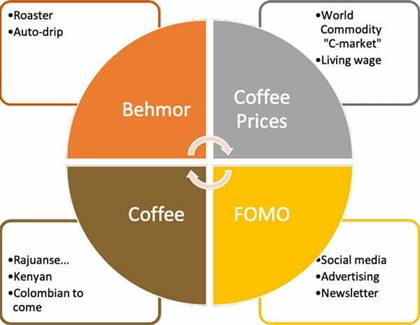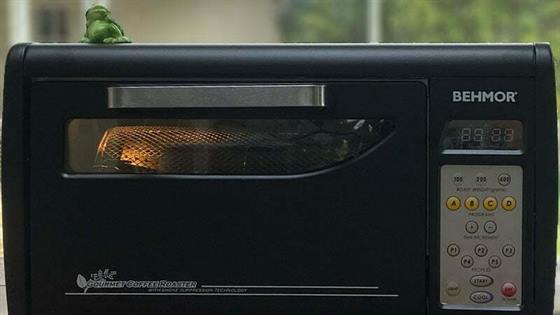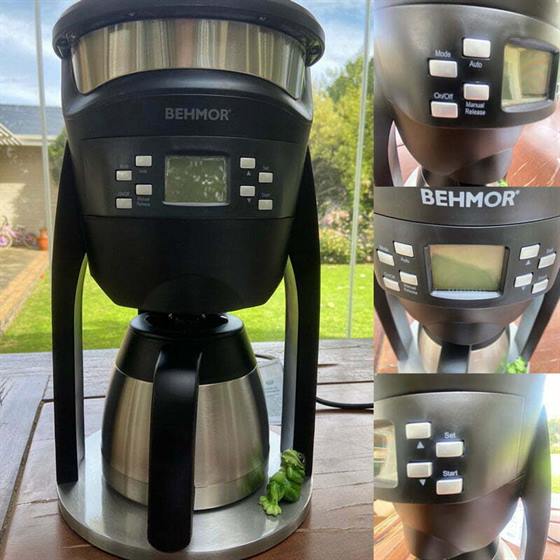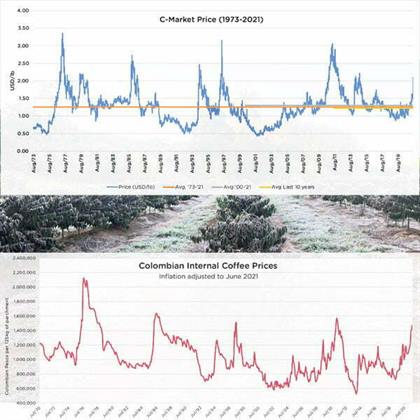Introduction
There is a lot here, most of which could have been shorter. You may need 10 minutes to read the whole thing or jump to what you are interested in. To be covered in the proceeding newsletter:
- Behmor equipment
- Roaster
- Auto-drip
- Coffee Prices
- Coffees:
- Rajuanse Estate
- Kenyan
- New-season Colombians
- FOMO\

Behmor
Just after we initially secured the AeroPress product in 2010, we started looking around at home roasters. We strongly believe that great coffee is made by people that love coffee. For the final beverage, this typically means (it has for us) that the best coffee is made at home by you or someone with whom you share your living abode. That is why we were keen to look at a roaster for those looking to travel further down the rabbit hole of coffee — a home roaster that can produce a good product. In that search, we found the Behmor and were put in touch with the Australian division as they had a 230V version.
Those who have been (and bean) with us on the journey as far back as then will know a lot happened in 2010 and 2011 for us. One of them was our resultant move to the lovely little roastery at Buitenverwachting. We are still happily roasting there, so that was a positive move.
However, as a result of the move, we decided to concentrate on our coffee bean offering rather than equipment. The current importers of AeroPress were keen to do a lot more marketing (see below FOMO), so we happily released that product to them. We had dabbled with a few other products, but none of them had been popular at the time (boy, how things change).
The short and the long of this introduction is that last year, in a discussion with Adrian from Rancilio, he mentioned he was looking at other products to consider. We mentioned the Behmor roaster, and he seemed interested. Adrian is used to the process of bringing in electronic equipment and all the many hurdles that have to be hurdled to get a product into South Africa. After much ado about red tape, the Behmor products have arrived. And we have been given the first bite before the rest of the industry starts offering the products.
There are two products that have landed: The Behmor 2020 home coffee roaster (which we will also use to sample roast our coffees) and the Brazen Pro, which is their auto (and manual) drip filter machine.

Behmor 2020 roaster
The roaster is precisely what we expected it to be. While it takes 14-18 minutes to roast coffee, it can roast over 400g (although for the lighter roasts, we recommend the maximum to be 250g). It took around three roasts to get dialed in to what we wanted, and we are happy with the results. This is NOT an automatic roaster. While you do not have to do a lot, it requires user interaction at crucial points. The roaster does not smoke up the house, and that is important. Most home coffee lovers will find the 250g it roasts, suitable for their weekly needs. Coffee cannot get any fresher. Read more here…

Brazen Pro
Adrian decided to bring this product in himself. We were unsure whether the South African market was ready to deal with yet another drip brewer. I am prepared to admit to being wrong here. We love this product. If you love the filter style brew, this is a great product. It comes with a reusable gold filter basket, has programmable bloom time, and has some great features. I have also brewed a Kalita and a Hario with it in manual and auto mode and was impressed. My Moccamaster has been retired; I only used it when I was lazy. I use the Brazen twice a day when at home. Read more here…

Coffee Prices
C-market
On a virtual trading floor far removed from coffee farms, commodity traders use weather predictions, Brazilian crop reports and a lot of technical data to determine the commodity price of coffee. Most coffee in the world has pricing that is related to this price. This price has increased from around $1.2 per pound in the last eight months to hover around $2 per pound. And the outlook at the moment is that the price is likely to go up, especially if the rains do not start soon or the El Nino takes root. The sad thing about the c-market price is that Brazil’s crop is the most significant factor in it, mainly because they are the largest producer.
This price has little to do with quality. However, when the c-market price has increased by 80%, expect that this price will ripple through the industry. For some of our entry-level coffees, we will need to adjust the prices, specifically the blends. We have been anticipating this and have changed some of the components in the budget blends. So far, the response to these changes has been positive.
But if you start seeing your coffee suddenly cost a little more in the next 6 months, you will know why.
Living wage
The commodity coffee price bears no relation to the majority of coffee farms, most of which are smallholders. You could argue that since smallholders produce only around 30-40% of the world’s coffee, why do we have to care? In a genuinely capitalistic manner, you may have a point. But to that point, let me point out to you that not a single human being on this planet needs coffee. It is a luxury. Are you happy to wear the mink coat and not worry about the blood spilt?
The concept of a ‘living wage’ has been growing worldwide. So what is a living wage for a coffee farmer? After a significant amount of research, here are a few definite points:
- A living wage in each country is dependant on the economics of the country. A living wage in, say, Indonesia may be lower than a living wage in Brazil etc.
- Profit is linked to the cost of production. If it costs less per pound to produce coffee, then the profit will be linked to that. A large 200-hectare farm that is on a plain and can grow large trees in rows so that they can be mechanically picked has a different cost structure to a 3-hectare farm, high up the slope of a mountain or deep in a natural forest.
- With that in mind, the commodity market price is linked to the production price of the large farm. So a living wage can be generated for a large farm that hires a handful of people at about $1.2.
- For a small scale farmer, this value hovers around the $2.5 mark
If you love coffee from a small scale farmer (and most of our coffees are), then it is time to reward those that are producing these coffees. We try to find these coffees, and I am sure you know we have been publishing the FOB (not price to farm) prices on our site.
The more we pay for the coffee, the more the farmer gets. A coffee like our current CoE was a small lot, but that lot ensured Jose made significantly more money that year.
If we had our way, the c-market would be over $3.00 and we would sleep better at night. However, we may also end up closing our doors, since we have found that when we buy coffees at $6 and up, they do not sell. The cost for that coffee to you, the consumer, is too high.
One other consideration about living-wage, is that it extends to the person handing you your beans, or beverage. Having come from IT, I am appauled at what people are paid in the coffee industry, all along the chain.
What am I saying? Try to support people like us, and us. Drink less coffee that is sold below R300 a kilogram and more that is R400+ a kilogram roasted locally. You will then be doing your bit in ensuring we have coffee in the future.
Interested in more? Read our post and repost here… or watch this video…
Coffees
Rajuanse
Sometimes we work with co-operatives that release coffees based on the location they were picked. However, the coffees we have offered from the Rajaunse estate have been linked to lots and varieties. We now have a new lot that was named after Carol, from Seven Oaks. This is one of the most delicious lots we have offered yet. Read more here….
New Kenyan
We did announce this one last time, but it seems a few missed it. So if you did, check it out here…
New Crop Colombians
Since 2012 we have saved money slowly to afford to bring in our most loved range of Colombian coffees. This year savings have been tight. We are surviving through the year but have had to almost exhaust our savings. We are considering doing crowdfunding for the next shipment that has to be paid for in November. What do you think? Would you be keen to contribute?
FOMO
Walt Whitman said “Be curious, not judgemental”
The Fear Of Missing Out drives many social media consumers to scroll endlessly to find the one thing they may have missed out on. FOMO works both ways. As a company we feel the pressure (and get many recommendation on how to do it) to keep up the endless stream of posts on the various social media forms.
We have always felt that our product and service are our advertising. Investing in, and ensuring that those are at a level we are proud of, means our customers are motivated to spread the word.
Adopting a more curious approach to social media has been more our mantra. Curiosity is what we want to harvest with our posts. Our newsletters will always be determined by news. Our social media posts are meant to inform, not brand. At the same time we acknowledge that not everyone agrees with this, and this has often resulted in customers to a brand that drives in the FOMO lane. What we are saying is a heartfelt thanks to all of you that spread the word about what we do. Thanks to all those who ask us if we sell something, and our opinion of it. We appreciate each and every one of you.


